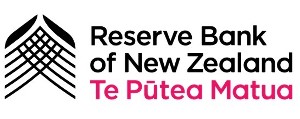Debt to income limits come nearer for borrowers
Another limitation on the mortgage industry is inching closer.
Thursday, November 10th 2022, 6:00AM  1 Comment
1 Comment
by Eric Frykberg

It would restrict would-be borrowers' access to a loan to a set proportion of the total sum of money they earn.
It is known as a Debt to Income ratio (DTI) and comes on top of Loan to Value Ratio (LVR) limitations which already exist.
But LVR limits look at the ratio of a deposit to the capital value of a home. DTI's are based on earnings of borrowers, and would be established as a second line of defence against an out-of-control housing industry.
The Reserve Bank insists no decision has been made to actually implement DTIs and they could not be in place before 2024 anyway.
But it has done a lot of work on them and made several decisions, including casting a vote in favour of DTIs over an alternative control which would have limited banks' abilities to soften the serviceability measures for some borrowers.
The bank also began designing an actual DTI scheme in April and it has now prepared an exposure draft of the regulatory framework.
This draft contains a number of technical proposals, which it wants opinions on.
For example, it proposes a DTI based on a person's pre tax income, for the sake of simplicity and to avoid complications from politically-driven tax changes. It also wants all forms of income counted, such as rents or dividends as well as wages.
Another issue is how to balance relatively constant income, such as wages, against variable income such as bonuses and commission, and it proposes devolving decision making on this down to individual banks.
The draft also proposes adding debt such as existing mortgages and student loans to the debt side of the DTI equation, but it might exclude Buy Now Pay Later schemes from that assessment.
Business debt would generally be kept out of the DTI calculation when it is held separately from mortgage debt. Other issues include the question of multiple borrowers and other forms of complex lending. There could also be exemptions to DTIs on such things as loans made under Kainga Ora’s First Home Loan scheme, loan refinancing or bridging loans.
Once the industry responds to these proposals, a final version will be decided on. But even then, the Reserve Bank thinks the trading banks will need a year to put these processes in place.
So if the RBNZ decides in the end to activate the system it has worked so hard on, it will be March 2024 before it can be in place at the earliest.
| « Mortgage Link spices up its home loan offering | Vincent Capital adds a South Island BDM » |
Special Offers
Comments from our readers
Sign In to add your comment
| Printable version | Email to a friend |



